In addition to the photos of the 31,000-acre Eiler Fire we posted earlier here and here, below are a few more. The fire is about 40 miles east of Redding, California. Most of it is in the mopup stage after receiving rain a couple of days ago.
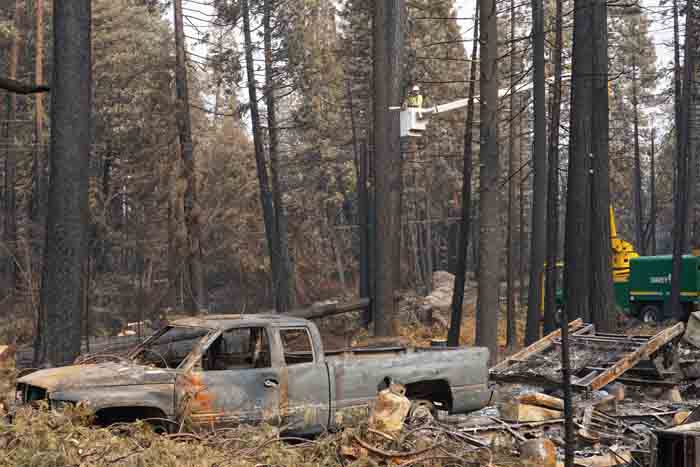

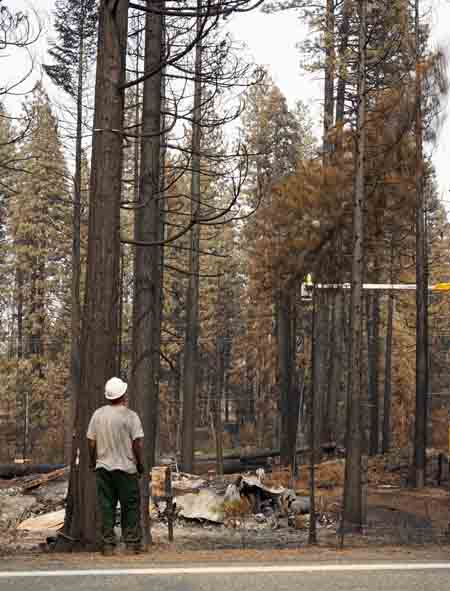
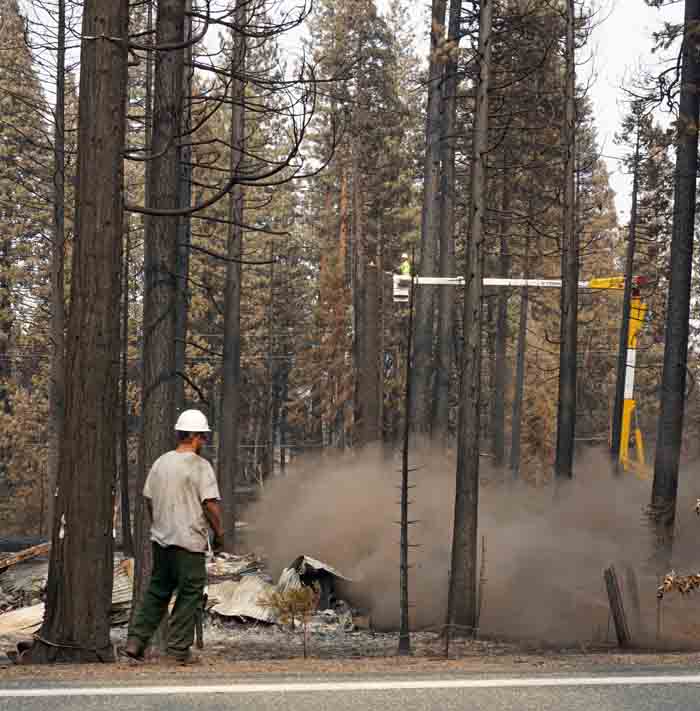
News and opinion about wildland fire
In addition to the photos of the 31,000-acre Eiler Fire we posted earlier here and here, below are a few more. The fire is about 40 miles east of Redding, California. Most of it is in the mopup stage after receiving rain a couple of days ago.





Yesterday we had the privilege to meet David Shepard, the owner of a house deep in the woods in northern California. His log house with a metal roof survived an onslaught from the 31,000-acre Eiler Fire about 40 air miles east of Redding, California without a scratch. Even his stacks of firewood on the porch and in the yard are completely intact. The fire burned completely around his place, right up to the structure on one side. Helpfully for when a fire burns through the property, the house is flanked on two sides by a creek that forks just upstream from the structure.
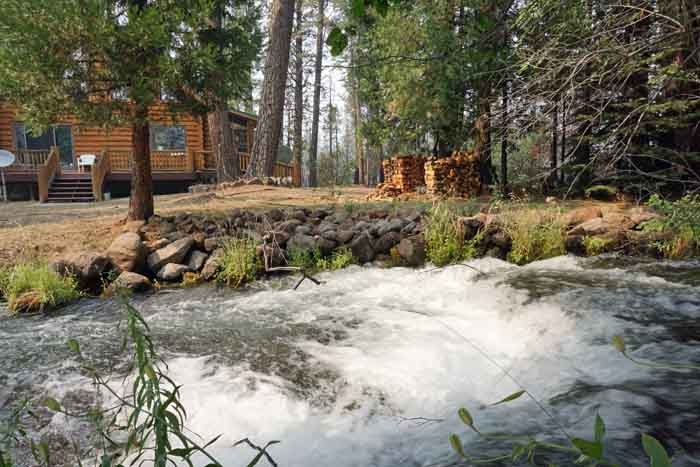
When we asked Mr. Shepard if he was at the house during the fire, he said, “Do you think I’m crazy?”
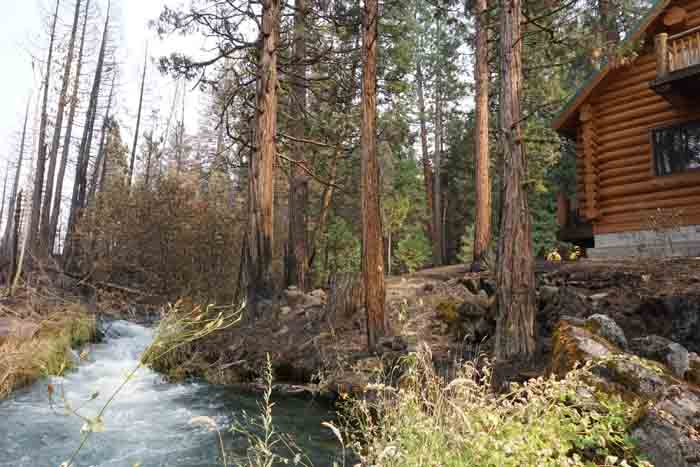
As you can see in the photo above, just across the creek multiple tree torched, indicating that it was burning intensely just 75 feet away from the house. We saw no indication of any retardant drops from air tankers, probably because they were not allowed to place retardant near the streams.
Mr. Shepard, who prefers not to have his picture taken, is a film preservationist — he restores film. We asked if he worked with old nitrate base films which are extremely flammable and can even spontaneously combust if stored at a high temperature in an area where the heat can’t dissipate. He said he has some in the house but they are stored in metal containers.
We later Googled Mr. Shepard and discovered that the modest man produces movies and is an award-winning film preservationist, receiving, among others, the Lifetime Achievement Award from the Denver Silent Film Festival.
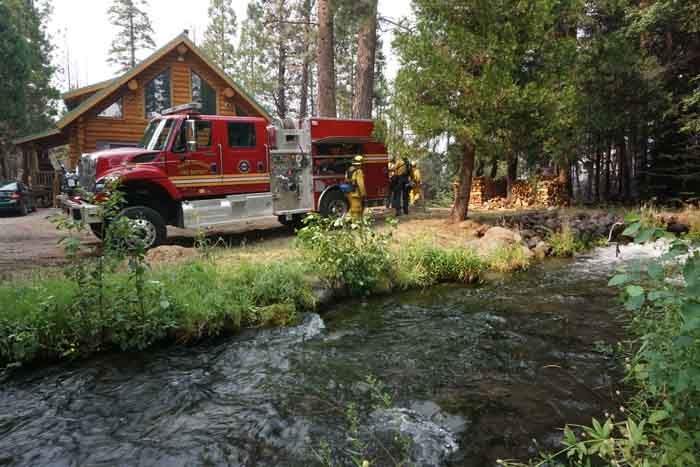
While we were at the house an engine crew from the Tahoe Douglas Fire District arrived to do some additional mopup. Much of the area had already been heavily mopped up, to the point of becoming muddy, probably by using water drafted out of the creek. But there had not been much done on the other side of the creek, and a few smokes created some concern for Mr. Shepard, who had called and requested some additional work from the firefighters.
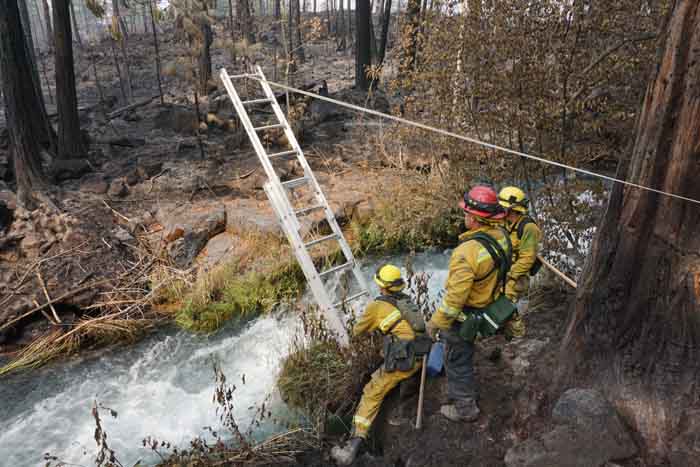
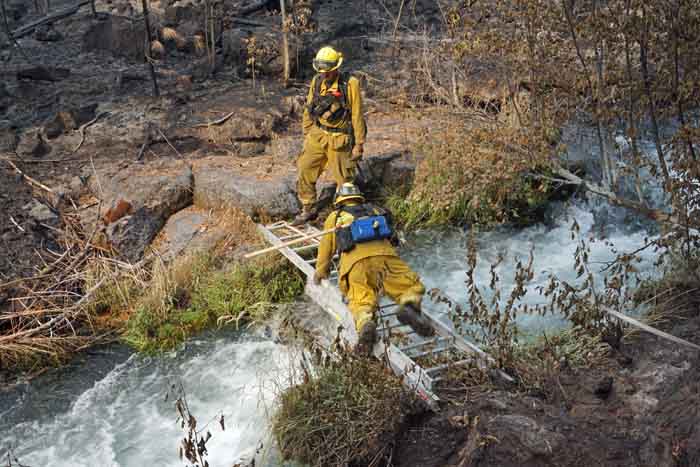
One reason the area across the creek had not received much attention was that there was no easy way to cross the six to ten-foot wide water course. Captain Chris Lucas and his crew of Jessie Rowan, Ben Pratt and Shean Bailey solved that problem by taking a ladder off the engine and using it as a bridge. After extending it vertically, they lowered it across the water by using “baby hose” as a rope. The firefighters then got on all fours and crossed on the ladder.
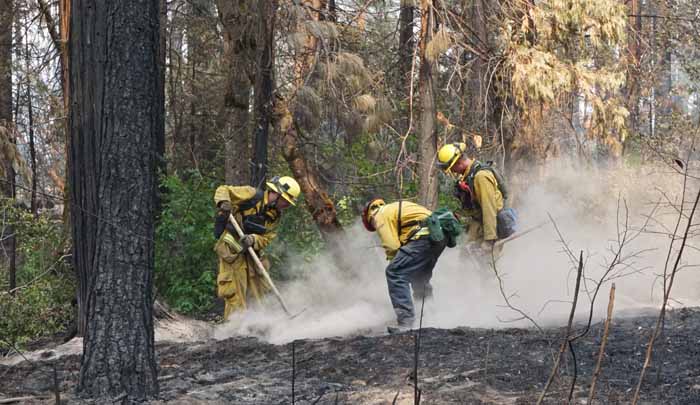
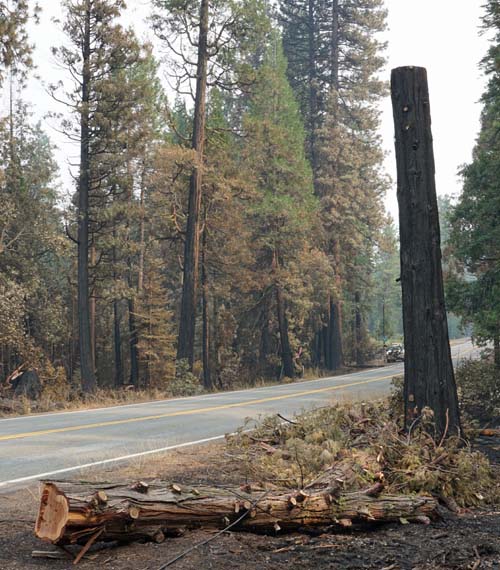
We had a full day in northern California today, talking to a Colorado Springs engine crew at the U.S. Forest Service district office in Chester and visiting the air attack base across the street. Then we spent a few hours on the 31,000-acre Eiler Fire 40 miles east of Redding. We will post more about these activities later, but as a start, here is a photo we took on Highway 89 on the Eiler Fire.
OK… the Hotshot Crew that is leaving high stumps… cut it out!
But seriously… Davey Tree Service was very active in the area, using their bucket truck with a long boom to do work high above the ground. Maybe this tree, right next to the highway, was partially burned through higher up in the tree and they removed the top to reduce the hazard on the highway. And maybe…. in the interest of time they moved on to higher priorities, leaving the high stump to be cut down later at their leisure. Or, maybe…. they thought leaving it like this added to the esthetics.
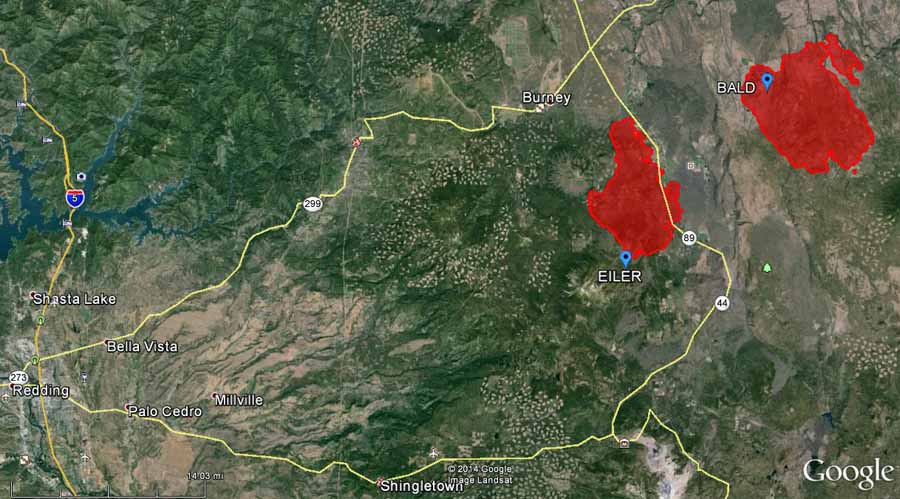
Two fires about 40 miles east of Redding, California doubled in size on Saturday. These fires are part of the reason the number of burned acres in California’s National Forest has quadrupled since Wednesday.
The Eiler and Bald Fires were both very active with each devouring an additional 16,000 to 17,000 acres.
#EilerFire taken a few hours ago by one of my Captains at the Burney Fire Base Camp. Unreal. pic.twitter.com/rRGMVmh57Y
— Gerry Gray (@ggfire343) August 3, 2014
Eiler Fire
The Eiler Fire, 40 miles east of Redding and 4 miles southeast of Burney, has blackened 23,000 acres. On Saturday it was very active on the north, southeast, and west sides, moving onto the east slope of Burney Mountain. Evacuations have been issued for Johnson Park, Cassel, Big Eddie Estates. An advisory has been issued for the town of Burney. The fire has crossed Highway 89 which remains closed from the junction of Hwy 44 and 89 north to Hwy 299.
RT @DangWx: Wow! MT @Weather1224 : Amazing picture of the #eilerfire and #baldfire in eastern Shasta county. pic.twitter.com/AbXxj3v5oL
— 28storms.com (@28storms) August 2, 2014
The fire behavior was described by firefighters as “running, torching, and long range spotting, with rapid rates of spread downhill to the north and east.”
An engine from the Redding Fire Department was damaged in the Eiler Fire.
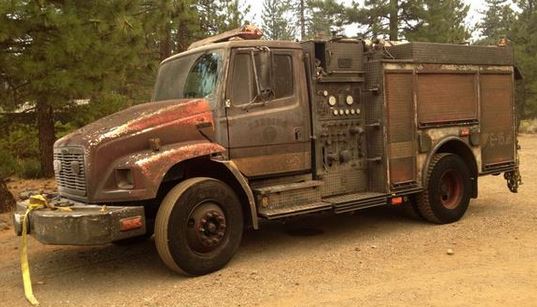
Bald Fire
The Bald Fire is 52 miles east of Redding, 13 miles east of Burney, and 7 miles east of the Eiler Fire. It doubled in size Saturday, spreading through drought-affected six-foot tall brush and patches of timber, growing from 17,000 acres to 34,000. Late on Saturday it was exhibiting extreme fire behavior, most actively spreading on the south and southwest sides.
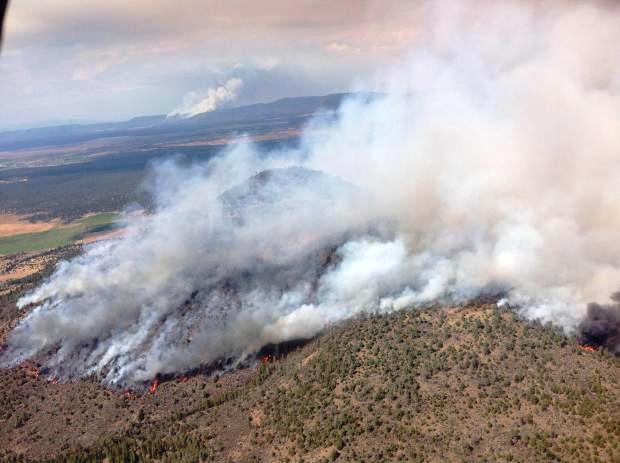
BNSF Railroad is providing a two-car fire train to assist with fire suppression along the railroad tracks. In 2010 we wrote about fire trains. Here is an excerpt:
In the United States firefighting trains are frequently called water cars or fire trains. Usually a fire train consists of an engine, several tank cars carrying 7,000 to 14,000 gallons of water each, and sometimes a caboose for transporting the employees or firefighters to operate the fire equipment. Most fire trains carry an assortment of fire equipment including hose reels, hand tools, nozzles, and hose. Sometimes each tank car will have it’s own pump and master stream nozzles, and they often have the ability connect the tank cars together with hoses so that the water can be shared between the cars. When a fire train has an engine at each end, the train can be split so that both ends of a trestle can be protected at the same time.
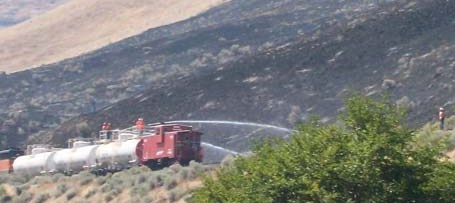

Firefighters in northern California are battling fires that were started after almost 1,000 lightning strikes hammered the area this week. High temperatures that reached 108 degrees in Redding on Friday contributed to some of the significant spread of the fires.
Brief descriptions of some of the fires submitted by fire managers included words and phrases like “extreme fire behavior with wind-driven runs and long-range spotting”; “running with torching and long-range spotting”; “running with torching and crowning”; “crowning”; “active fire behavior with crowning”; and”structures threatened”.

Some of the larger and more active fires in northern California:
In central California on the Sierra National Forest 18 miles east of Oakhurst, the French Fire has burned 11,466 acres in steep, rugged terrain. The 4,689-acre El Portal Fire outside Yosemite Valley continues to spread to the north approaching Highway 120.
#EilerFire making a run in timber on Friday @USFSLassen photo pic.twitter.com/ltqf6I3hB9
— USFS Fire-California (@R5_Fire_News) August 2, 2014